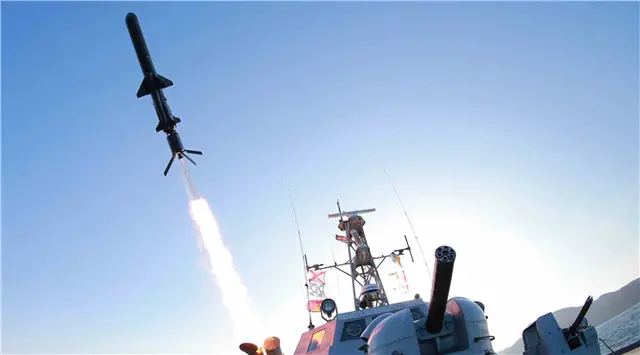South Korea's defense ministry said Thursday that it is closely watching a possible test-launch by the Democratic People's Republic of Korea (DPRK) of its long-range ballistic missile after its nuclear test earlier this month.
Defense Ministry spokesman Kim Min-seok told a regular press briefing that if the DPRK conducts any significant provocations going forward, there is a possibility for it to happen all of a sudden.
Kim said that South Korea's military continues to closely monitor and watch any signs of Pyongyang's long-range ballistic missile launch.
His comments came after Japan's Kyodo News reported that Pyongyang may be preparing to test-fire long-range ballistic missile, citing a Japanese government official who offered the recent satellite imagery as the signals.
Pyongyang had test-fired long-range ballistic missiles months before or after its previous atomic bomb tests. Two months before its third nuclear detonation in February 2013, the DPRK put a satellite into orbit with a three-stage Unha-3 rocket, which Seoul and Washington considered a ballistic missile.
The DPRK is banned from test-firing any rockets based on a ballistic missile technology under UN Security Council resolutions. Worries emerged about Pyongyang's another ballistic missile launch after it claimed on Jan. 6 that it had successfully tested its first hydrogen bomb.
Kim acknowledged a possibility for Pyongyang's missile launch though both South Korea and the United State catch no signs in advance.
The DPRK had covered the roof of a launch pad for rockets with screens at its main rocket base at Tonchang-ri in the northwest region, where the latest ballistic missile launch occurred. It was presumably aimed to hide possible preparations for another rocket launch.
The rocket base is believed to have equipped itself with automated facilities of assembly and transport for rocket projectiles that can be moved in the two-lane rails inside the launch site, a South Korean government official was quoted by Yonhap news agency as saying.
Railroad tracks between the rocket base and the Tongchang-ri railway station have been fence-screened to cover up the moves of rocket projectiles, possibly built in a factory in Pyongyang, the official noted.
Kyodo estimated Pyongyang's another rocket launch to be taking place within a week. The Seoul official was quoted by Yonhap as saying that the moves of vehicles and personnel continued to have been detected at Tongchang-ri.
The official said the DPRK is ready to test-fire another ballistic missile at any time after the completion in 2015 of the launch pad expansion construction. The height of the launch tower was raised from 50 meters to 67 meters.
The Unha-3 rocket, launched in December 2012, was about 30 meters long. The rocket supposedly has a range of more than 10,000 km, capable of striking parts of the U.S. mainland.
The South Korean military reportedly estimates that the DPRK has developed a rocket that can fly some 13,000 km. During a military parade in October last year, the DPRK showed off an intercontinental ballistic missile (ICBM), believed to be a modified KN-08 long-range ballistic missile with a round-shaped tip.
The DPRK is believed to have deployed about 2,000 ballistic missiles, including Scud missiles with a range of 300-700 km and Rodong missiles ranging some 1,300 km.
The South Korean spokesman also said that the DPRK hasn't issued any no-sail, no-navigation zone, considered one of many signals that Pyongyang is preparing to launch a long-range missile.
He noted that Pyongyang's long-range missile launch is in violation of UN Security Council resolutions and poses a significant threat to the world's peace and stability.
 简体中文
简体中文

